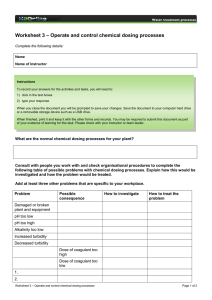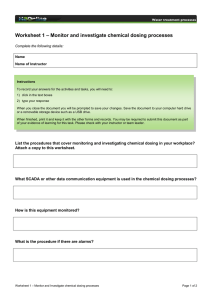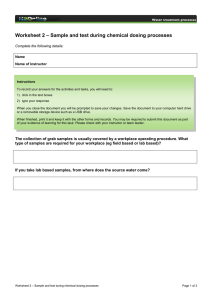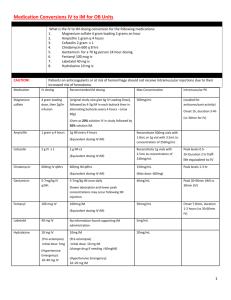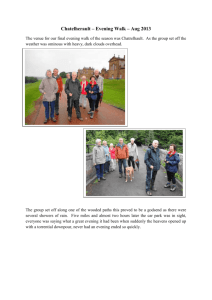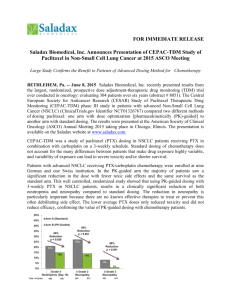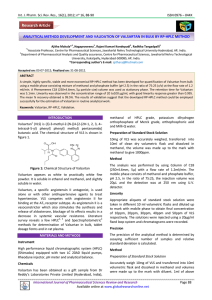CHRONOPHARMACOLOGY OF VALSARTAN AND AMLODIPINE
advertisement
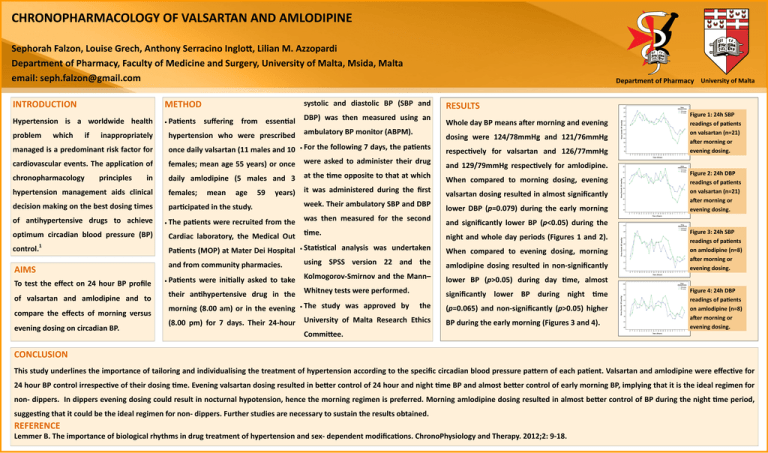
DEPARTMENT OF PHARM ACY UNIVERSI TY OF MA LTA CHRONOPHARMACOLOGY OF VALSARTAN AND AMLODIPINE Sephorah Falzon, Louise Grech, Anthony Serracino Inglott, Lilian M. Azzopardi Department of Pharmacy, Faculty of Medicine and Surgery, University of Malta, Msida, Malta email: seph.falzon@gmail.com INTRODUCTION problem which if inappropriately managed is a predominant risk factor for principles hypertension management aids clinical decision making on the best dosing times optimum circadian blood pressure (BP) control. 1 of valsartan and amlodipine and to compare the effects of morning versus evening dosing on circadian BP. For the following 7 days, the patients were asked to administer their drug daily amlodipine (5 males and 3 females; it was administered during the first mean age 59 years) RESULTS Whole day BP means after morning and evening dosing were 124/78mmHg and 121/76mmHg at the time opposite to that at which participated in the study. week. Their ambulatory SBP and DBP The patients were recruited from the was then measured for the second Cardiac laboratory, the Medical Out time. respectively for valsartan and 126/77mmHg When compared to morning dosing, evening valsartan dosing resulted in almost significantly lower DBP (p=0.079) during the early morning night and whole day periods (Figures 1 and 2). and from community pharmacies. using SPSS version 22 and the amlodipine dosing resulted in non-significantly Patients were initially asked to take Kolmogorov-Smirnov and the Mann– lower BP (p>0.05) during day time, almost their antihypertensive drug in the Whitney tests were performed. morning (8.00 am) or in the evening (8.00 pm) for 7 days. Their 24-hour The study was approved by significantly lower BP during night time the University of Malta Research Ethics Figure 2: 24h DBP readings of patients on valsartan (n=21) after morning or evening dosing. and significantly lower BP (p<0.05) during the When compared to evening dosing, morning Figure 1: 24h SBP readings of patients on valsartan (n=21) after morning or evening dosing. and 129/79mmHg respectively for amlodipine. Statistical analysis was undertaken Patients (MOP) at Mater Dei Hospital AIMS To test the effect on 24 hour BP profile hypertension who were prescribed ambulatory BP monitor (ABPM). females; mean age 55 years) or once in of antihypertensive drugs to achieve Patients suffering from essential DBP) was then measured using an once daily valsartan (11 males and 10 cardiovascular events. The application of chronopharmacology systolic and diastolic BP (SBP and METHOD Hypertension is a worldwide health Department of Pharmacy University of Malta (p=0.065) and non-significantly (p>0.05) higher BP during the early morning (Figures 3 and 4). Figure 3: 24h SBP readings of patients on amlodipine (n=8) after morning or evening dosing. Figure 4: 24h DBP readings of patients on amlodipine (n=8) after morning or evening dosing. Committee. CONCLUSION This study underlines the importance of tailoring and individualising the treatment of hypertension according to the specific circadian blood pressure pattern of each patient. Valsartan and amlodipine were effective for 24 hour BP control irrespective of their dosing time. Evening valsartan dosing resulted in better control of 24 hour and night time BP and almost better control of early morning BP, implying that it is the ideal regimen for non- dippers. In dippers evening dosing could result in nocturnal hypotension, hence the morning regimen is preferred. Morning amlodipine dosing resulted in almost better control of BP during the night time period, suggesting that it could be the ideal regimen for non- dippers. Further studies are necessary to sustain the results obtained. REFERENCE Lemmer B. The importance of biological rhythms in drug treatment of hypertension and sex- dependent modifications. ChronoPhysiology and Therapy. 2012;2: 9-18.
